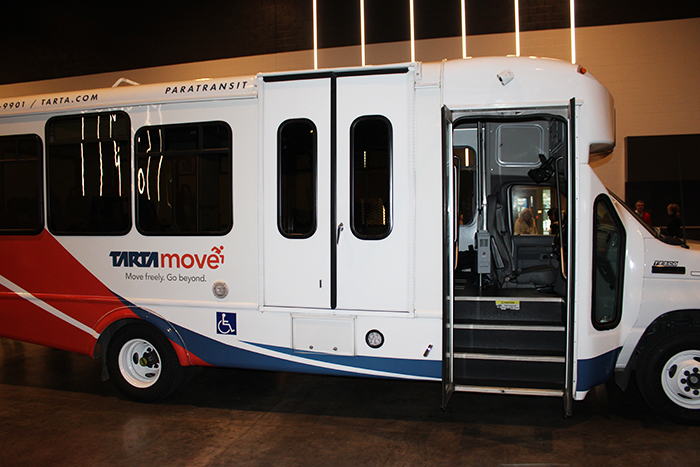 The Truth Staff
The Truth Staff
On Thursday, November 13, the Toledo Area Regional Transit Authority hosted a community update at the Glass City Center and announced its vision and plans for 2025 to the several hundred people in attendance.
Three new initiatives were announced by Laura Koprowski, TARTA CEO and president. A new payment system, TARTA card, is coming soon. This smart card will enable long-term passengers to ride at more affordable rates. “The more you ride, the more you save,” said Koprowski. Fares on the prepaid card are capped at $3 per day, $15 per week, and $45 per month, regardless of how many trips are taken in those time periods.
TARTA will also update its paratransit system buses and rename the system. TARPS will become TARTAmore in order to avoid confusion and reflect that fact that all TARTA riders are treated equally. “Paratransit service is just as important as our other services,” said Koprowski.
The third initiative, and perhaps the most significant of all, is the TARTA plan to start a feasibility study in February to look at introducing Bus Rapid Transit (BRT) to Toledo along six possible routes. BRT is a high-capacity system that provides more efficient service then tradition bus systems in a combination of light rail and bus service.
BRT typically has a lane dedicated to bus traffic, more frequent service, various bus entries to ease boarding, elevated platforms at defined stations, offboard fare collection, and traffic signals designed to give buses the right of way.
Six cities in the US have already introduced BRT, including Cleveland and a team from TARTA, along with local officials have visited Cleveland to view that operation.
The feasibility study will be financed through a $400,000 grant from the Federal Transit Administration along with $100,000 contribute from TARTA.
Koprowski suggested that Monroe Street, from Sylvania to downtown, could be one of the six routes.
The guest speaker of the community update was Anna Letitia Zivarts, author of a book titled When Driving is Not an Option. Zivarts, an advocate for equitable transportation, is visually limited and unable to drive. Her book notes that there is such a significant number of people who cannot drive – as many as 30 percent – for a number of reasons and are therefore unable to access the societal benefits available to those who can drive and have the vehicles to do so.
TARTA also presented results of its ridership surveys, which show that satisfaction with Toledo’s transit service is at an all-time high and above national averages.

